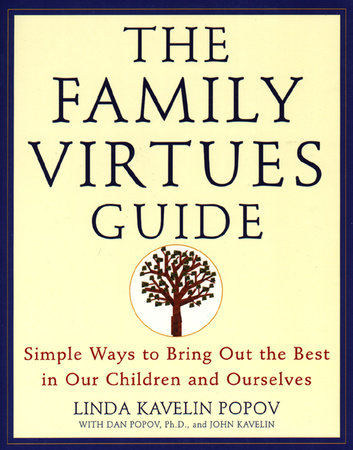Why should I learn new things at the age of 68? Let me list the reasons:
- It’s fun.
- It’s challenging.
- It’s rewarding.
- It’s useful.
and then explain what I mean.
At the moment, my main learning opportunity is learning new languages. For many years I have been brushing up my knowledge of French. Growing up in an English-speaking part of Canada, French was an obligatory language everyone had to learn. I enjoyed learning French, starting in Grade 8 and continued learning it all the way through high school. I may not have been great at writing or speaking French, but I enjoyed the classes and got grades a bit above average. I continued learning French in university, studying it for two more years. At that point, I found I had reached my limits, partly because I was not particularly good at writing (not even in English), and so discontinued taking more French classes.
I never got to use French much as most of my traveling was done in English-speaking countries or, at least those who had to deal with tourists, spoke enough English for me to get by with English.
Back to university days. Because I had been thinking of becoming a librarian, it was recommended that one have more than just French as a foreign language. So in my second year at UBC, I started learning German. I found that learning the language was fine and even made some new friends in my German classes, girls my age with German-speaking parents. The German course I remember best was one about the history of German culture, particularly about art, music and architecture. The course was in English, but I learned a lot of history that I found interesting. At the time, I was a lover of classical music and I was able to put my favorite composers into a cultural time period and learn more of what was actually going on at the time. (History had always seemed to be a list of battles, wars, kings and queens to be memorized up to that time and absolutely not interesting.)
In my last year of university, I was needing one more course and decided that taking an introductory course in another language would be easy, give me good grades and be fun. So I chose Italian and enjoyed learning more about both the language and the culture. A one-year course doesn’t teach a lot, but I did get the good grades I wanted. Little did I know how all this language learning would pay off later.
The years flew by and I never used these three foreign languages much at all. Until 1980, when my husband and I made the decision to move to Norway. Now all my efforts at learning new languages in the past gave me great benefits when I had to start learning a fourth foreign language. On our arrival in Norway, I was enrolled in a full-time weaving course, so I bought an English-Norwegian dictionary and worked on translating the textbooks in the evening. In the daytime there were other students to listen to and to talk to. Slowly I mastered another language other than English, certainly to a much better degree than I had ever mastered French, German or Italian.
After about two years, I could converse in and read Norwegian without getting exhausted. One is never finished learning a language as vocabulary is constantly changing, interests change and new areas of information arise. I continued to study in Norway, eventually had children and got a teaching job. My languages from university days lay idle in my brain, stored away in some deep dark recess.
Then my husband came across “Memrise” and I started relearning French vocabulary. It wasn’t very satisfactory as it was just a list of vocabulary to memorize and the words were not used in context. Then we discovered “Duolingo” and I was hooked. Since the 1st of January 2015 I have been active most days. Sometimes I do a little. Sometimes I do a lot. I still enjoy learning languages though the next step will be to use my knowledge more.
What makes it fun for me?
I enjoy learning new things. I like to read books where I can learn about what is happening in the world, or what new research is about. I like to watch television programs that try to teach me about something that I don’t know a lot about. Most of the time it is just putting two and two together, seeing if the sum is still four, or does it now make three or five. One learns new things by adding on to the knowledge one has already. I don’t necessarily want to learn about everything in the world, but in fields such as psychology and economics I enjoy finding new ways of looking at the world and putting old ideas together in new ways.
Why is it challenging?
Anything that one has to work with over time can pose a challenge, especially when new ideas can be hard to understand. I am currently working on learning three languages, French, Italian and Portuguese, which have very similar vocabulary and grammar. The challenge is not only understanding what I read, but also keeping the three languages separate. Part of the challenge of these three languages are the accents that are put on letters that I am used to in English. The accents give information about how a word is pronounced, but it can be confusing when è in Italian means “is” and the equivalent word in Portuguese is é.
What makes it rewarding for me?
We all enjoy accomplishing something that is challenging. I like the routine of working on lessons everyday. When I actually understand something that a few months ago I had problems with, then I feel like I am getting somewhere. Duolingo also builds into its program rewards such as how many days in a row I have worked on Duolingo (now 383 days in a row), earn extra rewards (called lingots) for accomplishing a series of lessons.
Why is it useful?
Learning new things creates new synapses in the brain. The more of these synapses we have, the easier the brain can deal with debilitating diseases such as Alzheimer’s.
I have also found that by learning Italian, words in English have more meaning. For example, in music we have scales, which comes from the Italian word “scala” meaning a ladder. The scales in English are a ladder up the notes on the piano.
Though at the moment, I am not traveling a lot, it can be useful to know other languages on the Internet and when reading novels. Just recently I read a book about a young family in Rome for a year. When the author used Italian phrases, I could understand what the phrases meant.
I will continue learning all of my life. It is fun, challenging, rewarding and useful.











